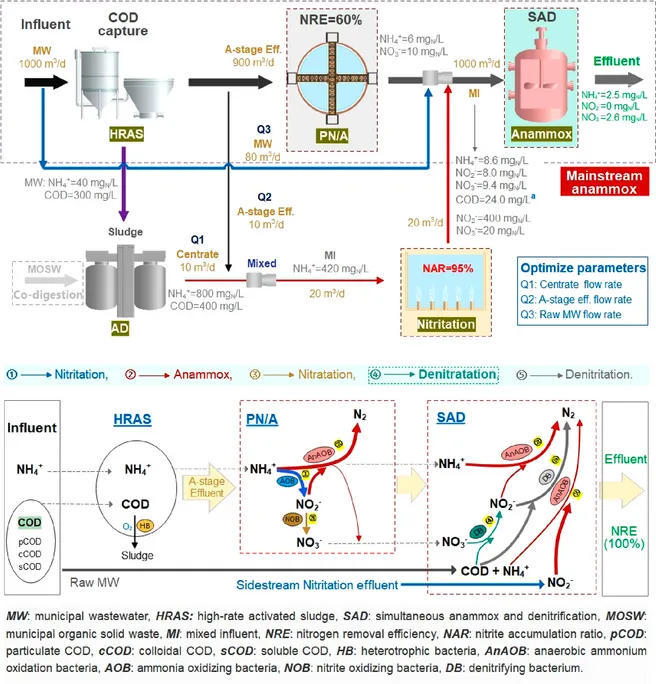With the push to achieve carbon neutrality, municipal wastewater treatment plants (WWTPs) receive increasing pressure because of the high energy consumption. To address this issue, various partial nitritation/anammox processes were developed owing to their significant economic benefits, which the operational costs could be cut by 85% compared to the currently employed nitrification/denitrification process. More importantly, anammox is an autotrophic process with no need for organics, an energy-neutral WWTP is hopefully achieved by capturing organics to recover bioenergy from anaerobic digestion.
Overall, the Sidestream Enhanced Mainstream Anammox (SEMA) process demonstrates to be a promising way of migrating toward efficient mainstream anammox. Multiple benefits would be achieved in terms of the economy, effectiveness, and efficiency, and the long-term stability and a suitable effluent quality could be guaranteed with the control easily to carry out. It thus has a great potential in engineering application. In contrast to the generally accepted viewpoint that sidestream wastewater needs to be treated separately and mainstream anammox process is difficult to implement, the beneficial role of integrating sidestream treatment in facilitating the achievement of mainstream anammox should be recognized. More efforts on this aspect are needed, which will indeed advance WWTPs to become energy neutral.
